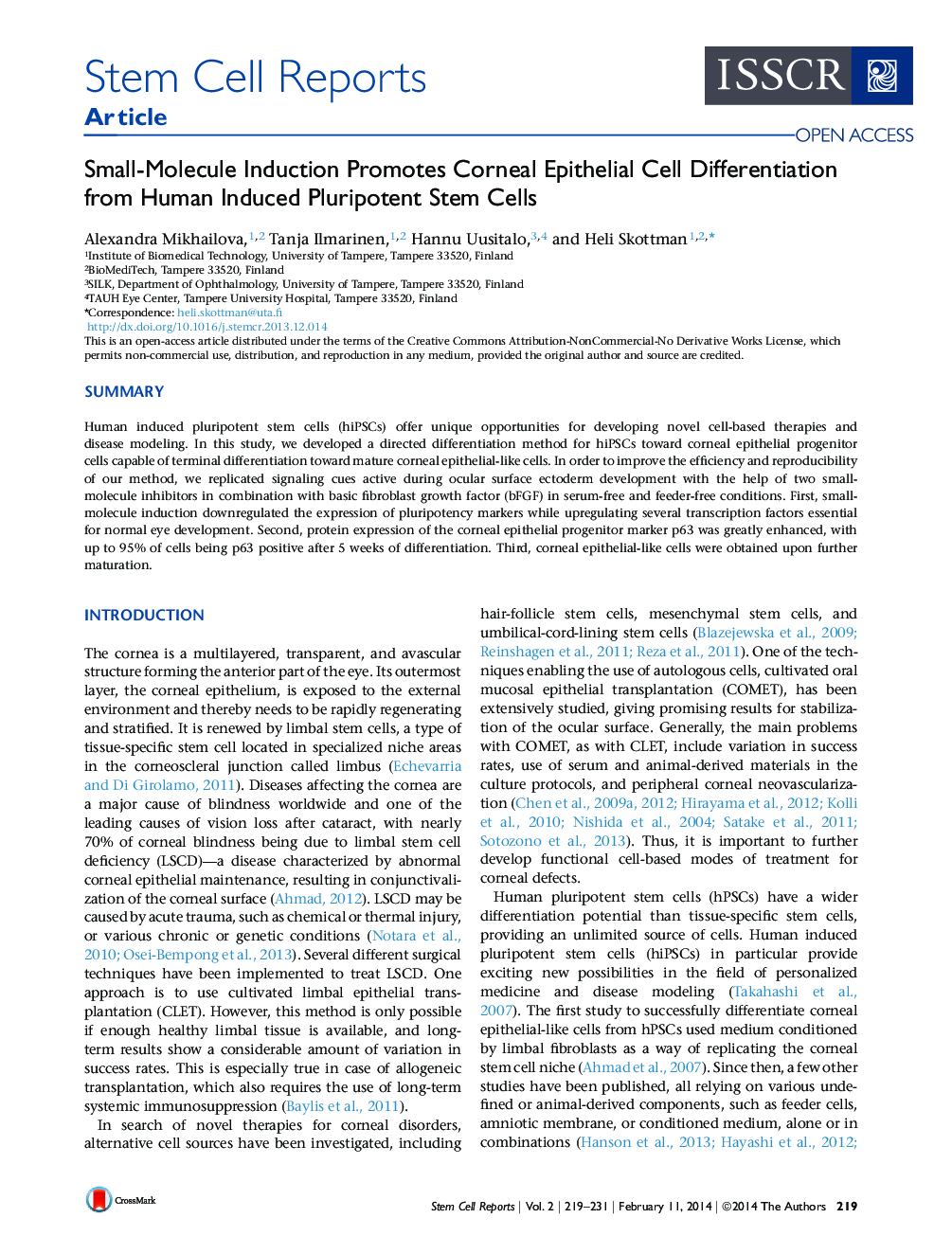| Article ID | Journal | Published Year | Pages | File Type |
|---|---|---|---|---|
| 2093466 | Stem Cell Reports | 2014 | 13 Pages |
•Small-molecule induction directs early stage differentiation•Subsequent maturation yields homogeneous populations of p63-positive cells•p63-positive progenitor cells are capable of terminal differentiation•The serum-free and feeder-free method can be upgraded to fully defined and xeno free
SummaryHuman induced pluripotent stem cells (hiPSCs) offer unique opportunities for developing novel cell-based therapies and disease modeling. In this study, we developed a directed differentiation method for hiPSCs toward corneal epithelial progenitor cells capable of terminal differentiation toward mature corneal epithelial-like cells. In order to improve the efficiency and reproducibility of our method, we replicated signaling cues active during ocular surface ectoderm development with the help of two small-molecule inhibitors in combination with basic fibroblast growth factor (bFGF) in serum-free and feeder-free conditions. First, small-molecule induction downregulated the expression of pluripotency markers while upregulating several transcription factors essential for normal eye development. Second, protein expression of the corneal epithelial progenitor marker p63 was greatly enhanced, with up to 95% of cells being p63 positive after 5 weeks of differentiation. Third, corneal epithelial-like cells were obtained upon further maturation.
